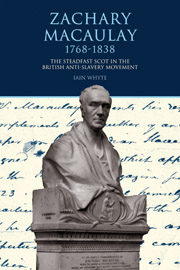Book contents
- Frontmatter
- Contents
- Foreword
- Acknowledgements
- Abbreviations
- List of Illustrations
- Chronology
- Introduction
- 1 From Inverary to the Sierra Leone River
- 2 Slave Traders and French Invaders
- 3 Captive in Love—to Selina Mills
- 4 The Trials of the Governor
- 5 Caught in a Multitude of Tasks
- 6 Clapham, Family and Friends
- 7 Attempting to Win France for Abolition
- 8 ‘Let Us Look it Up in Macaulay’—The Anti-Slavery Arms Manufacturer
- 9 Commerce and Conflict
- 10 Triumph and Tragedy on the Path to Glory
- 11 As Others Saw Him—As We Might Assess Him
- Bibliography
- Index
9 - Commerce and Conflict
- Frontmatter
- Contents
- Foreword
- Acknowledgements
- Abbreviations
- List of Illustrations
- Chronology
- Introduction
- 1 From Inverary to the Sierra Leone River
- 2 Slave Traders and French Invaders
- 3 Captive in Love—to Selina Mills
- 4 The Trials of the Governor
- 5 Caught in a Multitude of Tasks
- 6 Clapham, Family and Friends
- 7 Attempting to Win France for Abolition
- 8 ‘Let Us Look it Up in Macaulay’—The Anti-Slavery Arms Manufacturer
- 9 Commerce and Conflict
- 10 Triumph and Tragedy on the Path to Glory
- 11 As Others Saw Him—As We Might Assess Him
- Bibliography
- Index
Summary
Macaulay, Babington and the Three Cs
Historians have often been critical of late nineteenth-century interest in Africa, defining its belief as that the continent needed a triumvirate of Christianity, commerce and ‘civilisation’. The eighteenth-century founders of the Sierra Leone Company and those who supported the new British colony through the African Institution just as readily embraced these three ‘c's as the cornerstones of their policy. Missionary zeal both for conversion to the Christian faith and the adoption of British culture always sat uneasily alongside economic exploitation, even if the latter was aimed at development of land and trade in goods rather than people. The spectre of the slave trade and the compromises made with regard to diplomatic and commercial relationships with those around the colony of Sierra Leone were an ever present threat to its ideals.
All this was to be expected in such a controversial and risky venture. Zachary Macaulay, more than any other individual, was at the centre of this storm—as Governor of Sierra Leone and then as Secretary to the Sierra Leone Company and the African Institution. He was effectively the chief executive of the enterprise from 1794 until 1807 and until 1812 was responsible for its advocacy. As such he had huge emotional energy invested in the colony and it had become very deeply interwoven in his life. That was taxing enough. But for him there was also an ‘Achilles heel’ of what he aimed to see in Sierra Leone. Macaulay’s dealings with Sierra Leone were far from limited to administration. A large amount of his money was invested in trade with, and establishments in, the colony. Zachary Macaulay by the early 1800s was to describe himself on official documents as a ‘merchant’. Over the next three decades a substantial fortune was made and lost. This was this to lead to considerable financial distress for the Macaulay family. More crucially, it was to make him an easier target for the many who despised the whole idea behind the foundation of Sierra Leone and the growing anti-slavery movement in which he was fast becoming a key player.
- Type
- Chapter
- Information
- Zachary Macaulay 1768-1838The Steadfast Scot in the British Anti-Slavery Movement, pp. 194 - 216Publisher: Liverpool University PressPrint publication year: 2011

